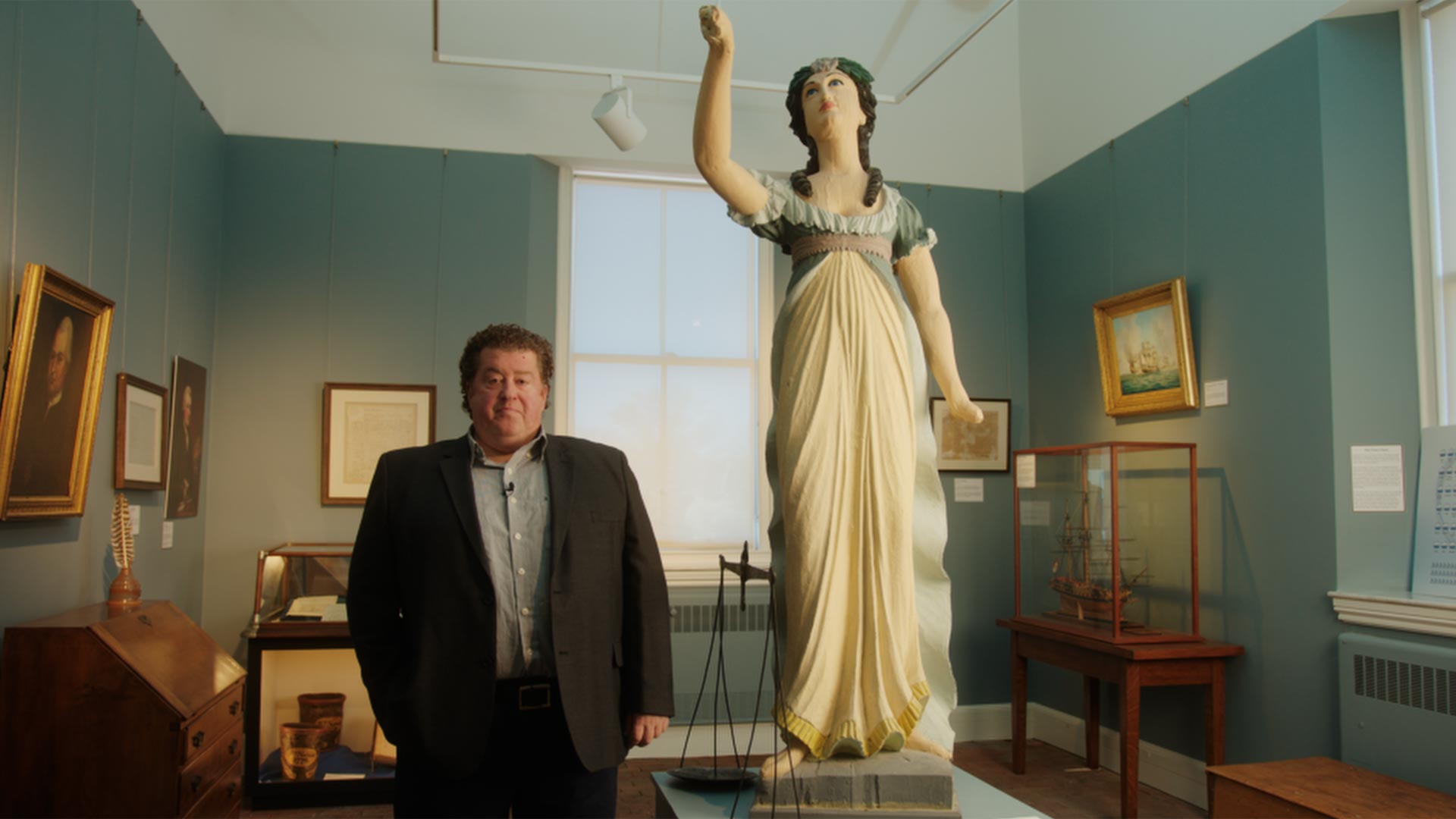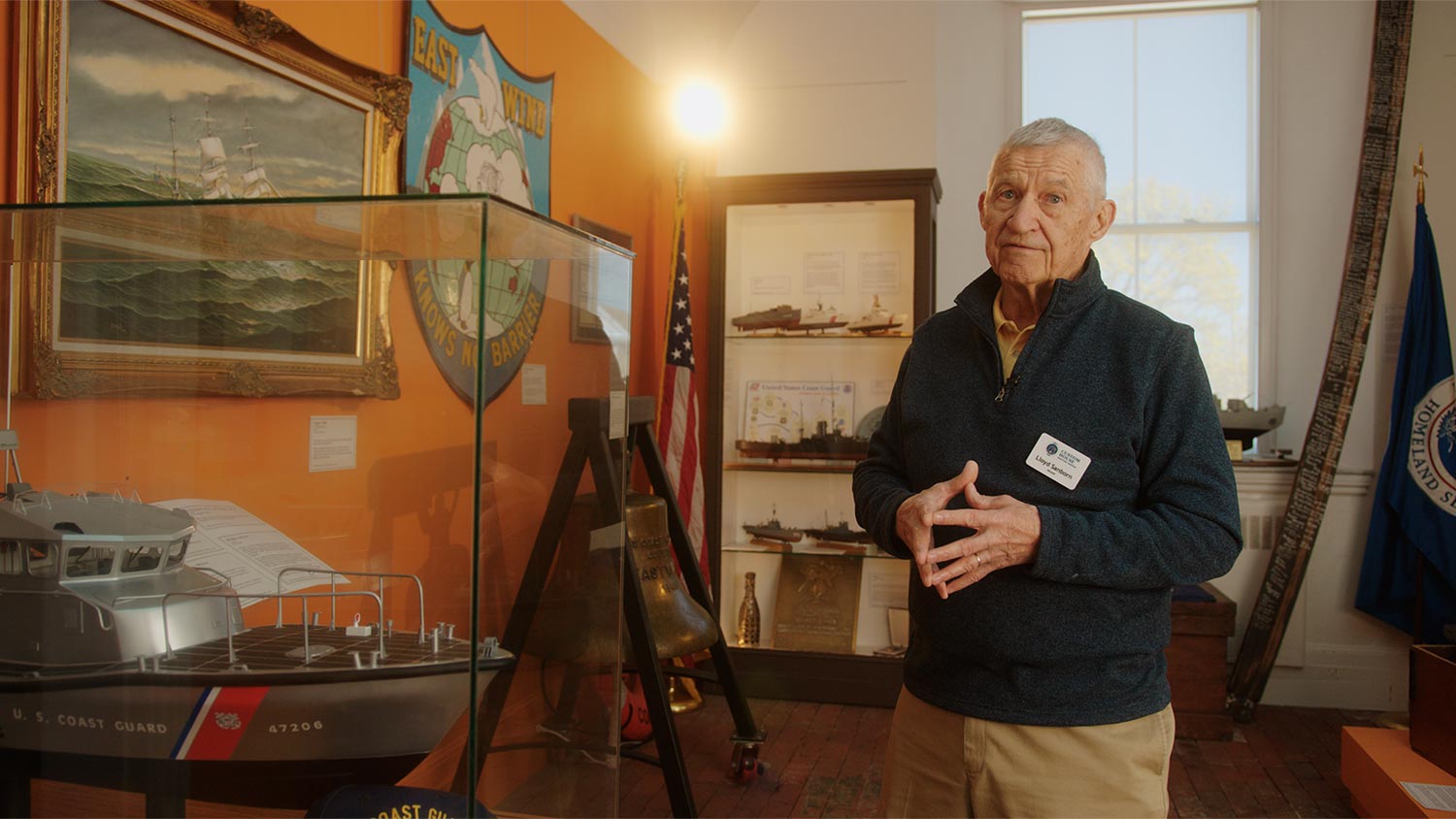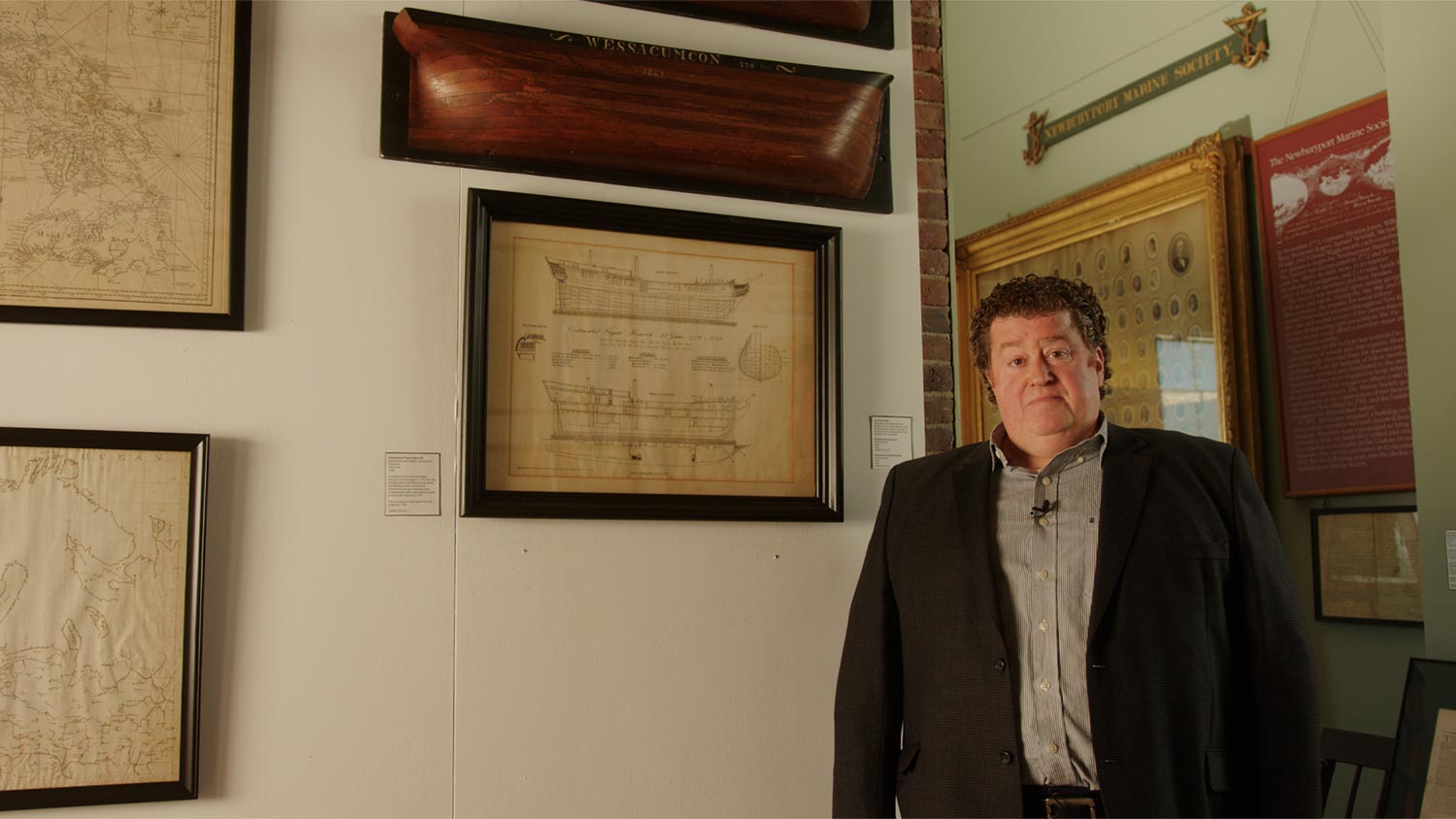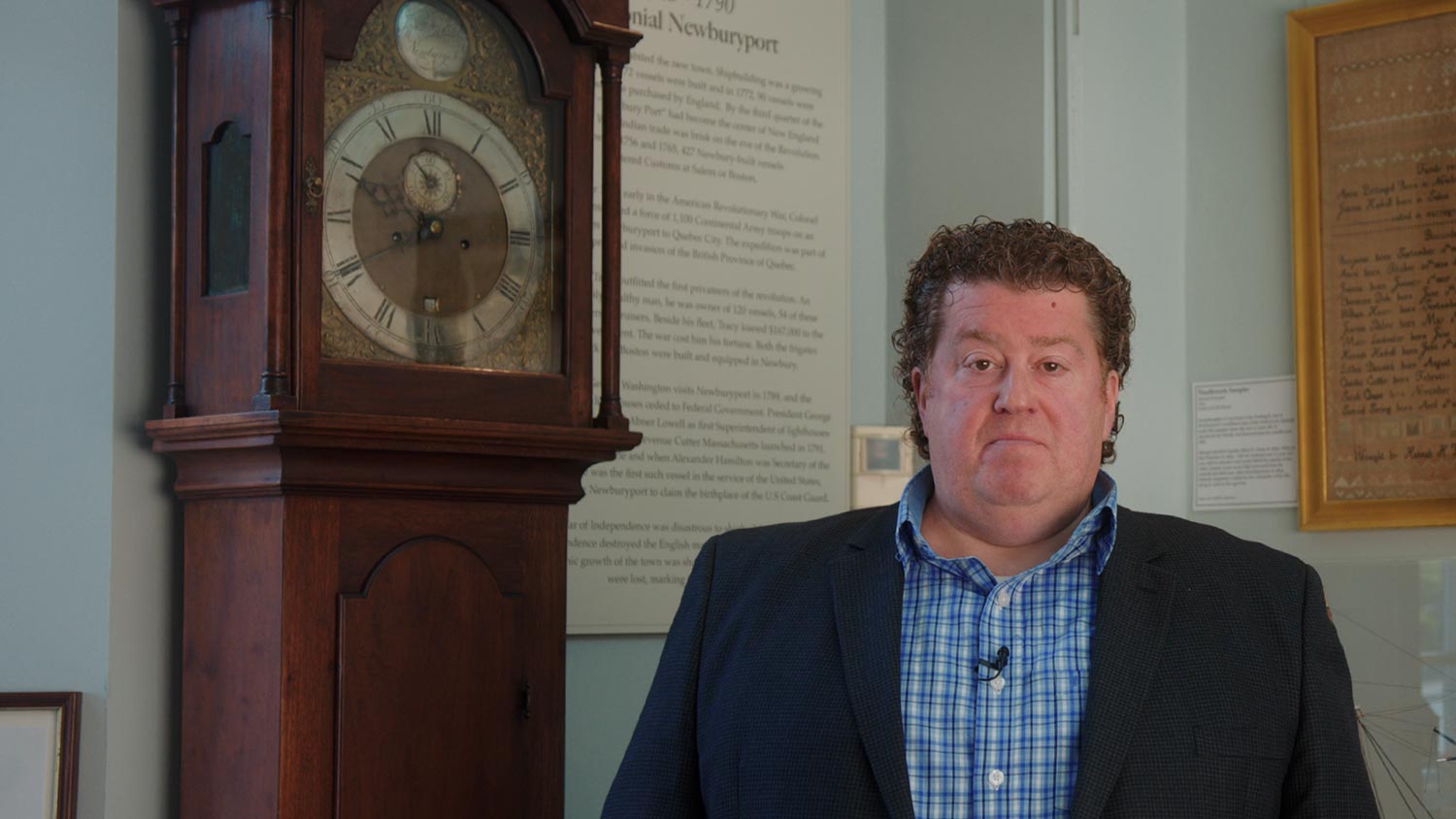TOWN OF NEWBURYPORT’S EARLY HISTORY
Marquand Gallery
NEWBURYPORT’S FOUNDING & REVOLUTIONARY WAR
Curator Kevin’s Video Tour
Curator Kevin's Video Tour
Curator Kevin Says: The Custom House Maritime Museum’s Marquand Gallery details Newburyport’s golden age—the first 50 years after its founding. The people who lived along the Merrimack River in the town of Newbury decided that their work (i.e. fishing and shipbuilding) was quite different than the farmers in the rest of the town. They petitioned the Massachusetts General Court to be able to break off and form their own town, which became Newburyport in January of 1764.
Gallery Highlights
American Revolution Vignette
Privateers & Capt. Moses Brown
The Colonial government relied on Newburyport “privateers” like Capt. Moses Brown to harass British ships. Curator Kevin also shows you a rare letter of mark.
Nathaniel Tracey’s Fleet
Curator Kevin discusses the story of Nathaniel Tracey. Worth about $6 million in 1780, he lost most of his fleet during the war—pledging his fortune and sacred honor to the cause.
The Marquands
Capt. Daniel Marquand and his wife Mary moved from England—helping mold a new town, engage in the revolution and welcome a new president to Newburyport in just a 25 year span.
What Will You Learn?
The Marquand Gallery contains many artifacts and exhibits highlighting the glory days of Newburyport, before and during the Revolutionary War.
The Marquands arrived in the port of Newbury in the early 1700s along with a wave of entrepreneurs. They saw the potential of tapping into local virgin forests and an abundant supply of fish to be exported to ports beyond. Access to the Atlantic Ocean also provided an easy way to international trade. As a result, wharfs, ships and commercial buildings developed rapidly.
Families like the Marquands became incredibly wealthy. Nathaniel Tracey, for example, became the wealthiest man in the United States by the time of the Revolutionary War. He and others had large fleets of ships engaged in international trade. These wealthy merchants also built grand homes.
In this gallery, enjoy seeing original documents of the colonial time period, as well a tea brick simliar to those burned at the Newburyport Tea Party (and thrown overboard during the Boston Tea Party.) You’ll also meet Newburyport’s most eccentric citizen Lord Timothy Dexter, who had two books written about him by Pulitzer Prize author J.P. Marquand.
View Additional Custom House Galleries
Moseley Gallery
Coast Guard Gallery
This gallery shows off many aspects of the U.S. Coast Guard. Founded in 1791 as the United States Revenue Service in Newburyport, the Coast Guard got its name change from President Woodrow Wilson in 1915.
Baker Gallery
Plan Your Visit
Plan Your Visit
- Museum Hours
Thursday - Saturday: 10 am - 5 pm
Sunday: 12 pm - 5 pm
Closed Monday - Wednesday
- Tickets
$5 admission
Free for NBPT residents, kids under 12, and museum members
Cost of admission includes access to the Discovery Center.
- Parking
City parking is available adjacent to the museum. View parking lot directions.






